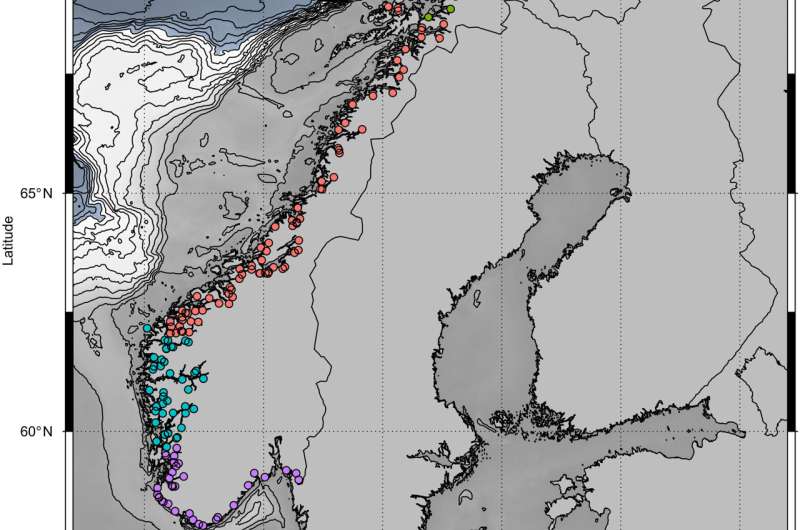Fig. 1. Map of Norway showing locations where Atlantic salmon scales have been sampled.Color code indicates regional divisions into south-eastern (purple), south-western (cyan), middle (red), and north (green). Credit: Science Advances (2022). DOI: 10.1126/sciadv.abk2542
A team of researchers affiliated with several institutions in Norway has found that wild Atlantic salmon in many Norwegian rivers experienced an abrupt reduction in body size in 2005 after their first year at sea. In their paper published in the journal Science Advances, the group notes that there was also a decline in the number of salmon that returned to their river home.
As conditions in the Norwegian Sea have changed over the past several years, the researchers wondered about possible impacts on the ocean ecosystem. They note that ocean temperatures have been increasing in the spring and summer in the area due to the declining extent of Arctic water inflow due to global warming, resulting in a 50% reduction in zooplankton. To learn more about possible impacts on wild Atlantic salmon, the researchers obtained and analyzed data describing salmon catches from 180 rivers in Norway over the years 1989 to 2016. In all the data described 52,000 salmon.
Atlantic salmon return to their homes in the rivers of Norway (and other places) to spawn each year after spending the winter in the open ocean. For their study, the researchers focused exclusively on salmon returning to their river base after their first calendar year at sea.
They found a sharp drop in fish size in 2005 among salmon caught in southeastern, middle and southwestern rivers, but not in northern rivers. They also found that the salmon were staying out at sea longer and that there was a reduction in the number of salmon that were caught—and that the number of salmon caught has not recovered. The researchers also found reductions in the size of Atlantic mackerel.
Adult Atlantic salmon in a river surrounded by ice. Illustrates the climatic adaptations of Atlantic salmon to boreal and artic environments. Credit: Bjørn Torgeir Barlaup
They suggest that the changes in fish body size are likely associated with ongoing changes to the parts of the ocean where they reside. They propose that the changes in fish body size could also be an indication of an ecological regime shift in the Northeast Atlantic Ocean, a shift that could also represent a change to wildlife at all levels of the ecosystem.
More information: Knut Wiik Vollset et al, Ecological regime shift in the Northeast Atlantic Ocean revealed from the unprecedented reduction in marine growth of Atlantic salmon, Science Advances (2022). DOI: 10.1126/sciadv.abk2542
Journal information: Science Advances
© 2022 Science X Network
























